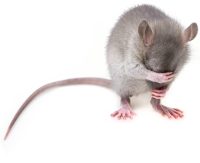Guarding the integrity of food processing facilities against pests is a mission-critical endeavor, and misinformation surrounding pest control can lead to costly mistakes, regulatory troubles and even potential health risks.
To ensure a safe and pest-free environment for food production, it’s essential to debunk these common misconceptions:
Pest control for my facility is just spraying pesticides, fogging and placing traps. Pest control plans are unique and specifically created to best fit the needs of the individual facility. Years of scientific research on pests’ behavior and trends by Pest Management Professionals (PMPs), university and industry entomologists, as well as product manufacturers go into the curation of such customized plans. Strategies for pest management are wide-ranging, highly individualized and constantly evolving through ongoing monitoring and maintenance.
Pest infestations do not affect other industries. Without sufficient pest control, many industries would be threatened. The pest control industry plays a vital role in the success of public health, structures and property, animal health and supporting the economy.
Pest control in my facility is the responsibility of my pest control provider. Pest control is an all-hands-on-deck responsibility that requires active participation from facility managers, employees, vendors and customers. To assist in helping keep pests out of your facility, be sure to:
- Inspect all deliveries to your facility to make sure there are no signs of pest activity including droppings, holes in packaging or bugs stuck in packaging tape. If evidence of pest activity is found in a delivery truck or shipment, isolate the truck and refuse delivery of the contaminated shipment.
- Avoid creating openings in your facility’s structure that may allow for easy access from pests. Seal cracks in walls and windows, add door sweeps and replace broken ventilation covers and installation weatherstripping that is no longer effective.
- When it comes to pests, early detection—which often comes from your staff—is the best way to avoid a larger, time-consuming and costly infestation problem. Many pest control providers provide complimentary staff training to explain the signs of pest trouble and where one might look to find them.
- Create and follow vacuuming schedules, sanitation plans and exclusion methods. Make sure to connect with your provider regarding best practices.
Common Pest Control Myths
Aside from pest control misconceptions in food manufacturing specifically, there are several myths to keep in mind when evaluating your pest control options. They include:
For more information, view our on demand webinar, “Top Misconceptions About Pest Control”
Electronic Fly Killer (EEK) devices are illegal. These devices are legal, but restrictions exist around where they can be used within the facility.
An Integrated Pest Management (IPM) approach is the same as “green” pest control. An IPM approach allows pest control providers to look at facilities holistically to determine the most beneficial plan possible. IPM can be more ecofriendly but can also use more specialized treatments depending on the provider and recommendation.
Fogging must be done routinely to control pests. Fogging is not a technique that needs to be completed many times. If pest issues persist, there are several other strategies a pest control provider could recommend within an IPM program that may not be as invasive.
Total release foggers are the same as fumigating. Fogging and fumigation are distinct forms of pest control using different chemicals and processes. Fumigation is much more invasive but may be recommended depending on the circumstance.
A paper logbook is better than a digital one. While both forms of logging can capture accurate information for your pest control provider, digital logs are much less likely to be damaged. Depending on the facility and provider’s preferences, both forms of logging are effective.
It’s the weapon and not the warrior that fixes pest issues. Without sufficient training of pest control professionals, no tool will be as effective as it could be. Using IPM, providers can better diagnose situations and act accordingly.
There is no innovation in the pest control industry. Pest control is always growing and evolving to create the best and least invasive options for your facility. Innovation is a key pillar of the pest control industry, backed by leading entomologists who study pest behavior and best practices.
What Pest Control Is
Now that you understand some of the common misconceptions and myths of pest control, it is important to establish the fundamental details of pest control and its possibilities for your facility.
IPM is an all-inclusive, ongoing and proactive cycle focused on prevention for your facility. After a thorough inspection, providers will implement the most effective customized pest control measures to benefit the needs of the facility. Providers then continue to monitor the program’s effectiveness and perform check-ins as needed to ensure the facility is cared for.
A successful IPM program:
- Is environmentally conscious and intentional in its measures.
- Involves the entire staff in the operation.
- Keeps detailed records of all pest activity and pest control operations.
- Educates and partners with facility managers to understand the business operations comprehensively.
- Addresses pest hot spots inside and outside the facility.
- Inspects the property and focuses on exclusion techniques that help keep pests out of the building.
For the optimal partnership with your pest control provider, always provide documentation of pest sightings and spotting trends in your facility. Implementing a process for staff to report any signs of pest activity can help keep employees aware. Always maintain open lines of communication with your pest control provider and communicate the importance of preventative measures internally.
Navigating pest control in your food processing facility requires dispelling of common misconceptions and myths to help develop the best possible treatment plan for your facility. By fostering an environment of open communication and trust, you can help safeguard your facility, protect your customers and employees, and preserve your business’s reputation and success.













